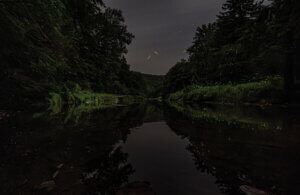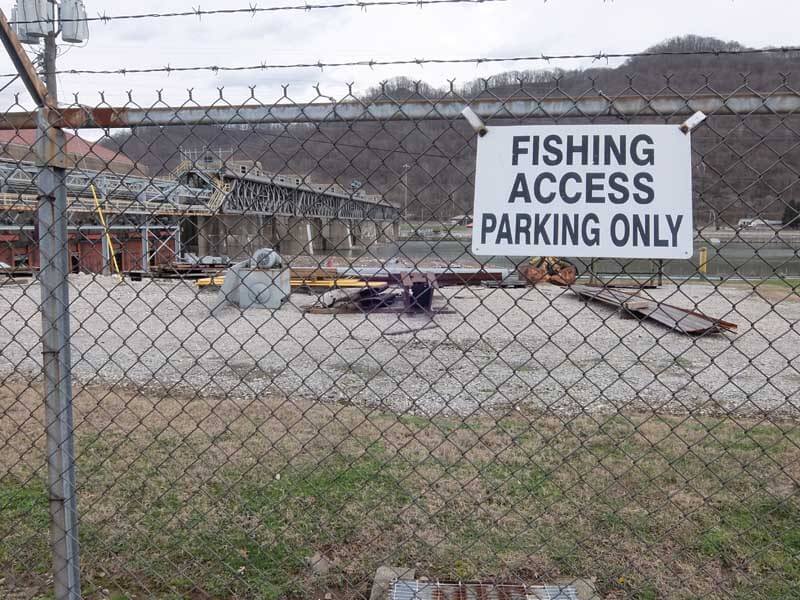
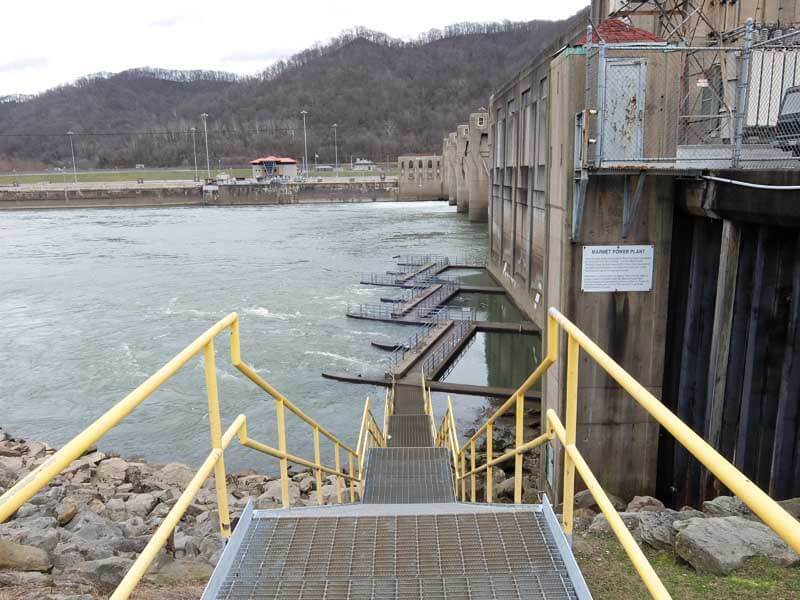
The Kanawha, Monongahela, and Ohio Rivers offer some of the best dam fishing spots in the state.
The Marmet Locks and Dam does not have the most inviting parking lot,
especially with the barbed wire-topped fence separating this patch of gravel
from the Kanawha River. But the blacklettered sign lets visitors know they’ve come to the right place.

FISHING ACCESS
PARKING ONLY
If it’s a school day afternoon, there’s a chance Luke Stricker’s red Ford Focus will be parked here. It will be the one with fishing rods stuck between the front seats and a typewritten essay curing on the dash.
When his classes end at 2 p.m., Stricker and his buddy Jonathan Mokus often pile into the small sedan and head for one of their favorite fishing spots. “We like to get in as much fishing as we possibly can,” Mokus says.
The locks are one of their regular stops, since they’re only a five-minute drive from Carver Career and Technical Center where Mokus, 16, studies drafting and Stricker, 17, is working toward his heating, ventilation, and air conditioning license. “I’ve caught a lot of good fish here,” Stricker says.
He’s pulled walleye and bass from the waters below the locks, but catfish are Stricker’s favorite prey. “In my opinion this is one of the best places on the river for catfish.”
Catfish are what Stricker and Mokus had on their minds one recent, unseasonably warm winter day. They’d heard the locks were a good place to catch shad, which makes good catfish bait, so they went to the river with a cast net.
West Virginia is home to a dozen U.S. Army Corps of Engineers navigational locks and dams: seven on the Ohio, three on the Monongahela, and two on the Kanawha, 10 of those with public fishing access. While they were built for industry, these feats of engineering also created some great fishing spots, often located right in the middle of town.
Go With the Flow
Dams changed the world. Mankind has always lived at the mercy of rivers but, by learning to manipulate these often unpredictable natural forces, we gained the ability to control flooding, generate electricity, and keep water levels consistent enough to allow for large-scale commercial shipping.
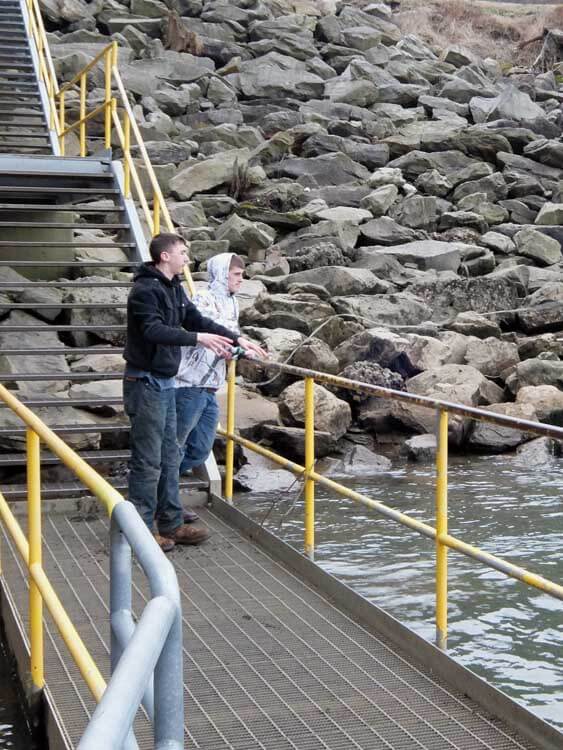
But as with any manmade imposition on nature, dams came with a cost. For one thing, damming a river rids it of natural features that make for good fishing. “There’s that old joke, ‘What does a fish say when he hits his head on a concrete wall?'” asks Mark Scott, District 4 fisheries biologist with the West Virginia Division of Natural Resources, who oversees the upper Kanawha River. He pauses a beat before delivering the well-worn punchline. “‘Dam.'”
Dams block fish migration. This can cause problems for fish populations, especially in species that like to swim upstream to spawn, like sauger, striped bass, and walleye. Dams also stop the flow of sediment that would otherwise become part of the downstream habitat. Left without any places to hide, eat, and lay eggs, fish swim off to find better habitats.
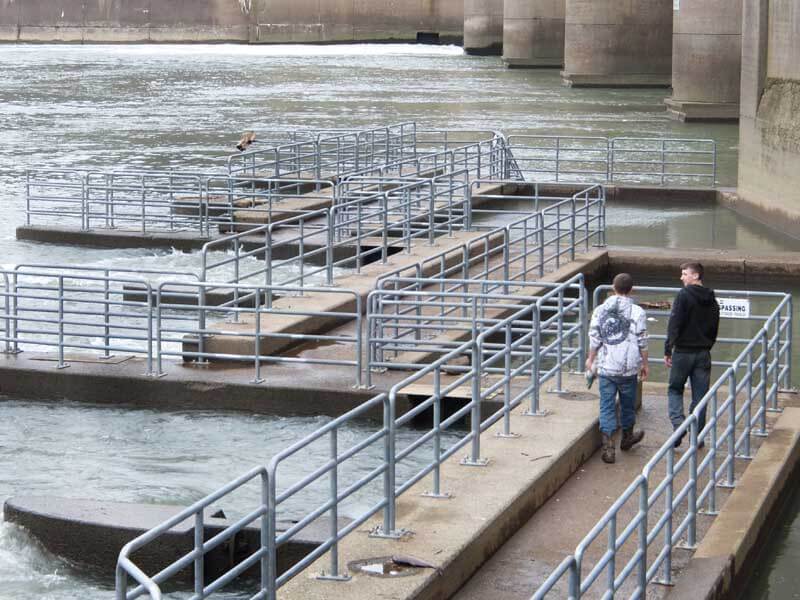
This would be bad news for anglers except—fortuitously enough— the tailwaters created by the dams have become fish habitats. The reasons are pretty straightforward. “Any kind of upstream barrier, whether it’s a waterfall or lock and dam, tends to concentrate fish at certain times of year,” Scott says. “It’s kind of like a bottleneck.”
That’s not the only reason dams attract fish. Fish tend to seek out cooler water because it contains more oxygen. “The warmer the water, the less dissolved oxygen it can hold,” Scott says. But even on the hottest days of summer, dams provide fish with a supply of freshly oxygenated water. “As it’s coming through those turbines or rollers, it mixes in air.”
That’s Just Fishing
It’s not quite shooting fish in a barrel, though. The waters below a dam may be brimming with fish, but catching them still requires some expertise.
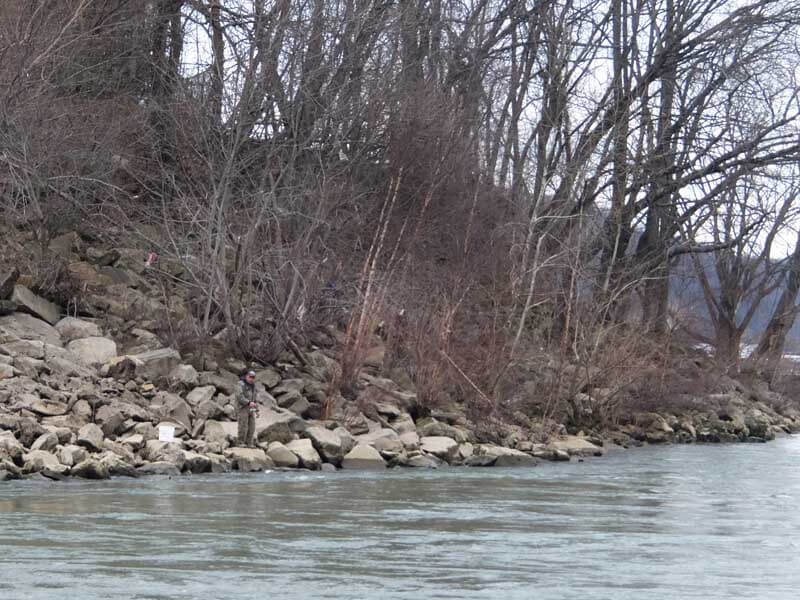
The best way to tell where fish might be is to read the surface of the water, says David Wellman, DNR’s District 1 fisheries biologist who oversees the upper Ohio and Monongahela rivers. Look for eddies outside the flow of the river or back breaks—areas where water reverses course and flows upstream. “It gives an area where fish can rest. They can also get in there and stalk prey that might be going by in the faster water,” he says.
The flow of the water changes frequently, however, depending on how the Army Corps of Engineers is releasing water that day. Currents are often swift and, since some fish stay near the riverbed while others are found closer to the surface, it can be difficult to get your bait where the fish are hanging out.
Good anglers find ways around these challenges, of course. There are slow-sinking lures to get near the river’s bottom and crankbait lures to attract fish that feed near the top. And sometimes the lowtech approach is best—just put a minnow on a hook and let it float with the current.

Back in Marmet, Stricker and Mokus were not having much luck with their cast net. They took turns hurling it into a calm pool near the shore. The net came back empty each time, and they eventually headed to the car after about a dozen attempts. “Some days it’s meant to be and some days it’s not,” Stricker said.
Even the best fishing spots aren’t infallible. Luckily, this one’s close enough that Mokus and Stricker—and anyone else with a rod, reel, or net—can get back as often as they want.
This story was originally published in the April 2017 issue of Wonderful West Virginia.
written and photographed by Zack Harold





